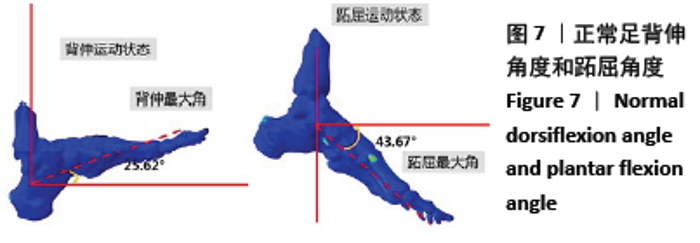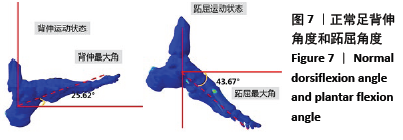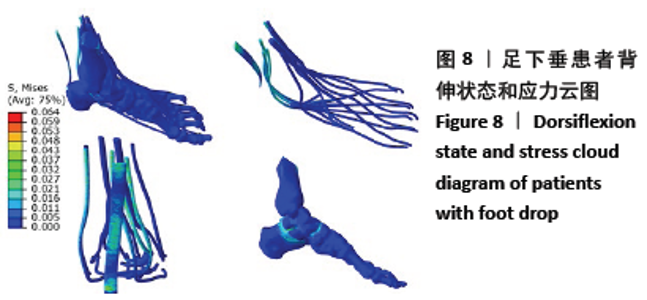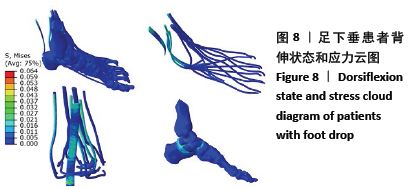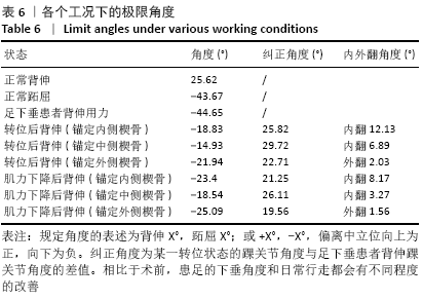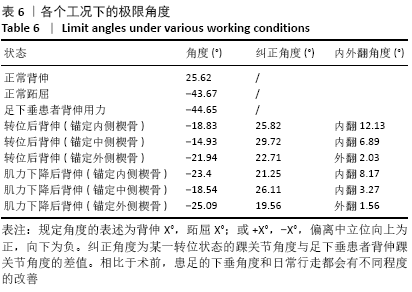[1] 杜世新,吴立军,贾艳丽,等. 先天性马蹄内翻足矫形后距、舟骨畸形的病理及三维有限元分析[J]. 汕头大学医学院学报, 2005, 18(3):149-152.
[2] WONG DW, WANG Y, LEUNG AK, et al. Finite element simulation on posterior tibial tendinopathy: Load transfer alteration and implications to the onset of pes planus. Clin Biomech (Bristol, Avon). 2018;51:10-16.
[3] 温晓东,赵宏谋,鹿军,等.胫后肌腱转位治疗腓总神经损伤源性足下垂畸形[J].中国修复重建外科杂志,2020,34(5):591-595.
[4] 李峰,吴华.基于DICOM数据构建股骨三维有限元模型的精确力学分析[J].中国组织工程研究,2013,17(30):5483-5489.
[5] GATTI CJ, DICKERSON CR, CHADWICK EK,et al. Comparison of model-predicted and measured moment arms for the rotator cuff muscles. Clin Biomech (Bristol, Avon). 2007;22(6):639-644.
[6] ANDERS C, BROSE G, HOFMANN GO,et al. Evaluation of the EMG–force relationship of trunk muscles during whole body tilt. J Biomech. 2008;41(2):333-339.
[7] NUSSBAUM MA,CHAFFIN DB. Lumbar muscle force estimation using a subject-invariant 5-parameter EMG-based model. J Biomech. 1998; 31(7):667-672.
[8] WAHAB AF, LAM CK, SUNDARAJ K. Analysis and Classification of Forearm Muscles Activities during Gripping using EMG Signals. Springer Singapore:2017-06-15.
[9] ZHANG SY, GUO SX, GAO BF, et al. Muscle Strength Assessment System Using sEMG-Based Force Prediction Method for Wrist Joint. J Med Biol Eng. 2016;36:121-123.
[10] 卢宁艳,王健,杨红春.电极放置位置对表面肌电信号特征的影响[J].中国运动医学杂志,2008,27(2):174-178.
[11] Bogey RA, Gitter AJ, Barnes LA. Determination of ankle muscle power in normal gait using an EMG-to-force processing approach. J Electromyogr Kinesiol. 2010;20(1):46-54.
[12] 薛黔,李名扬,李志义,等.小腿三头肌构筑学研究[J].解剖学报, 1995,26(1):1-4.
[13] 肖惠,滑东红,郑秀瑗.中国成年人人体质心的研究[J].人类工效学, 1998,4(3):5-8+10-12+71.
[14] 周宇宁,张宏,陈相春,等.建立足部三维有限元数字模型[J].中国组织工程研究,2015,19(5):662-666.
[15] Nie Bb, Giudice JS, Poulard D, et al. Evaluation and injury investigation of a finite element foot and ankle model for small female occupants. International Journal of Crashworthiness. 2019;24(5): 580-591.
[16] 何少波.数字化快速成形技术在腓总神经损伤导致足下垂畸形个体化治疗的应用研究[D].大连:大连医科大学,2018.
[17] 边蔷,胡海威,温建民,等.足部相关肌肉、肌腱组织材料弹性模量的测定[J].中国组织工程研究,2015,19(12):1919-1923.
[18] 许灿,张明彦,雷光华,等.踝关节内侧韧带损伤肌腱重建的三维有限元分析[J].中国组织工程研究,2012,16(35):6478-6483.
[19] 王正义.足踝外科学[M].北京:人民卫生出版社,2006:5-19
[20] MARSLAND D, STEPHEN JM, CALDER T, et al. Strength of interference screw fixation to cuboid vs pulvertaft weave to peroneus brevis for tibialis posterior tendon transfer for foot drop. Foot Ankle Int. 2018;39(7):858-864.
[21] ALEKSIĆ M, BAŠČAREVIC Z, STEVANOVIĆ V, et al. Modified split tendon transfer of posterior tibialis muscle in the treatment of spastic equinovarus foot deformity: long-term results and comparison with the standard procedure. Int Orthop.2020; 44(1): 155-160.
[22] KRISHNAMURTHY S, IBRAHIM M. Tendon transfers in foot drop. Indian J Plast Surg. 2019;52(1):100-108.
[23] CHO BK, PARK KJ, CHOI SM, et al. Functional outcomes following anterior transfer of the tibialis posterior tendon for foot drop secondary to peroneal nerve palsy. Foot Ankle Int. 2017;38(6):627-633.
[24] STEINAU HU, TOFAUTE A, HUELLMANN K, et al. Tendon transfers for drop foot correction: long-term results including quality of life assessment, and dynamometric and pedobarographic measurements. Arch Orthop Trauma Surg. 2011;131(7):903-910.
|
